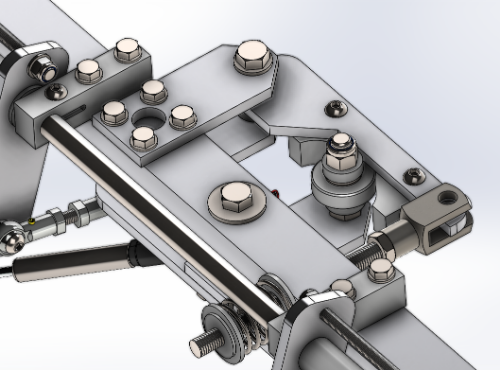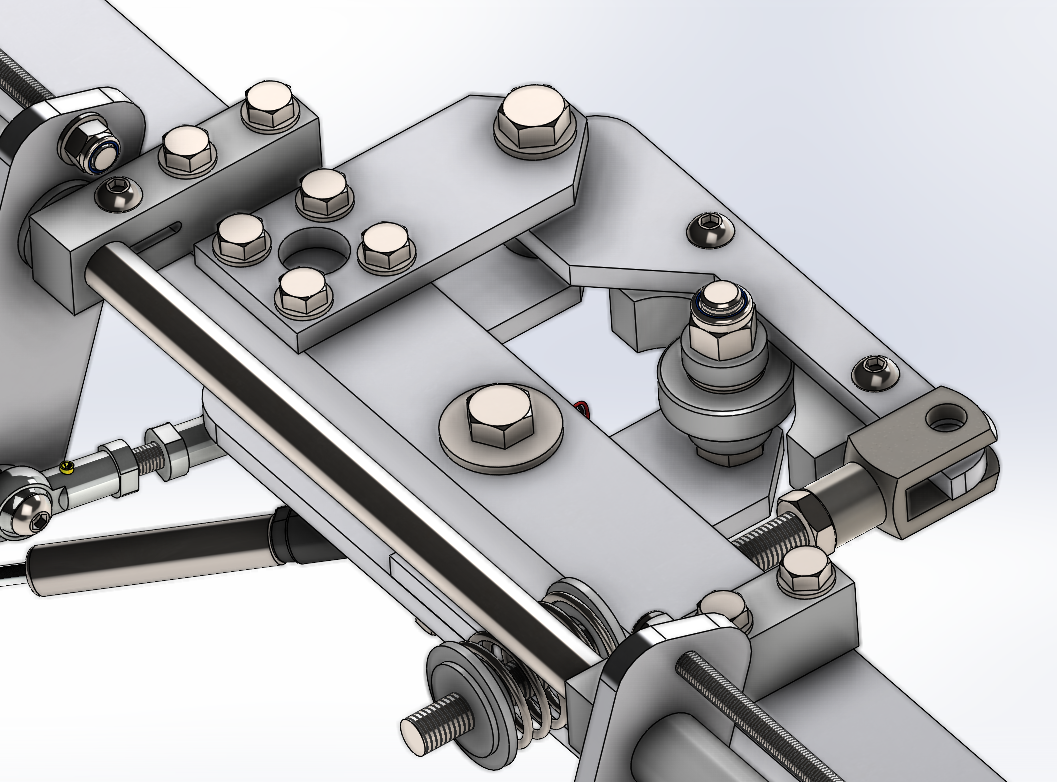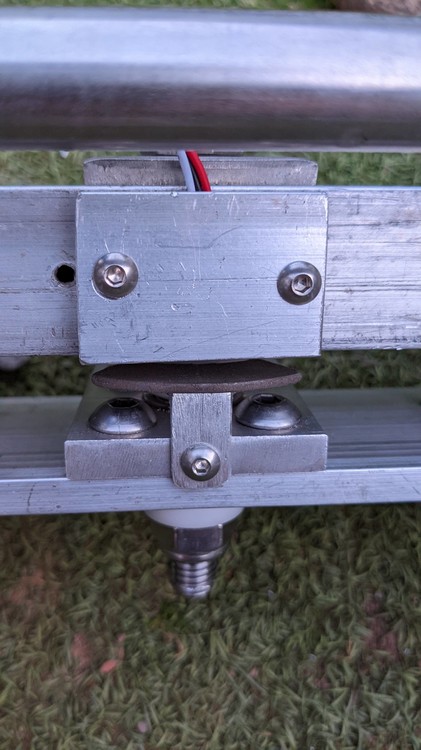-
Posts
1740 -
Joined
-
Last visited
Content Type
Profiles
Forums
Events
Everything posted by edmuss
-
https://babeltechreviews.com/hardware-accelerated-gpu-scheduling-performance/ On windows 10 Start>Settings>Display>Graphics Settings enable HAGS and restart, it might help but it's generally best off for now unless it solves the problem (as I said it caused my steamvr to crash). I think it's something that will play a larger part in GPU performance in the coming years but it's in it's infancy for now. Just make sure that you follow the instructions in the openxr thread on here EXPLICITLY. Do that and it should work nicely
-
Sounds as though your CPU isn't doing too badly, just the GPU falling over. Basically the renderer will drop the frame if it can't be drawn in time before the next one comes along, this is when it shows up as a red bar in the frametime chart. I suspect that what's happening is that the GPU runs out of onboard VRAM and starts to use the (very much slower) shared system ram it's performance dives. Openxr uses much less VRAM (note that DCS will allocate 100% of it but doesn't normally actually use it all) so the VRAM overrun generally doesn't happen when you have lower amounts to play with, give it a go. Before the openxr mod was developed for DCS I was trying to find a cause of the performance tanking and actually found that enabling HAGS stopped the VRAM issue from occurring, it did however cause steamvr to crash all the time. It's just something to try. My current recommendation would always be to use openxr.
-
When the framerates drop what's the steamvr frametime chart doing? Even better if you have FPSVR it will show you more details. It sounds like the VRAM hole bug, essentially DCS appears to drain all of your VRAM till the GPU grinds to a halt, seems to affect the 8-10GB cards far more. It can typically be triggered by restarting a flight or switching airframes. It's exacerbated in steamvr compared to openxr where I very rarely suffer from it. Typically the steamvr frame chart will go from green/orange to red and it will be dropping frames, FPSVR will show you a dropped frame count. If you give openxr a try you will likely find that the problem will go away (along with all the other performance and quality benefits that come with it).
-
I don't use sharpening at all because of the shimmering caused by how the engine renders in VR. To me, 90% render resolution is a pretty good image with regards to aliasing; there is some but it's not all that horrific. If I had the horsepower I would run MSAA because it really quells the shimmering but at the same time it also makes it all a bit fuzzy looking. You can still use Taz's version of Kegetys shader mod or lefuneste's 3Dmigoto to remove the canopy reflections with openxr There are two methods of setting render resolution with openxr: - Using OXRDT (the desktop openxr tools) to set a custom global resolution. The default render resolution is based upon the amount of VRAM you have - it's calculated that the three back buffers with 4xMSAA applied shouldn't be larger than 10% of available VRAM. For my 8gb 3070 it works out to be approximately 2450x2450 but this is only a rough starting point. or Using OXRTK (the in headset menu) to set a per app resolution override. Here you set pixel width rather than a percentage. Both options achieve the same end result, I would leave the desktop tools app at default and then use the resolution override in game. The NIS/FSR option in OXRTK is simply upscaling from a percentage of your target resolution (set above). So if your resolution is 3000 wide, upscaling set to 70% it will render the image at 2100 wide and then upscale it with magic and unicorns back to the 3000 wide; however the more information you can give it the better the image quality. Setting the resolution to 2100 wide and then upscaling it from 70% will give a poor image. Personally I don't like the upscaled image in openxr as it introduces micro aliasing across the whole screen which manifests as moire effects on the terrain which I find far more distracting than a few less FPS
- 688 replies
-
- oxr
- openxr dev toolkit
-
(and 1 more)
Tagged with:
-
Also note that is only a quick and dirty tuning guide for DCS with the openxr toolkit What you really want is the instructional thread on how to get it setup in the first place and then go read my guide to hopefully let you make some choices about how you want to tune it. I think in reality though, you might stuggle with DCS VR if you only have 6GB vram Start on the VR preset, as low a resolution as you can initially and turn things up one at a time to see how they affect things. I would anticipate you will need to run textures on medium/low, shadows low or off and no antialiasing. You will be relying on ASW (motion reprojection) to keep things smooth, run the quest2 at 72Hz and aim to tune DCS till you're getting 45fps or so, that way you will keep ASW engaged (should need a mimium of around 40fps to work I think).
-
On the other side with a 3070 I get around 65-70fps on Caucasus and 55-65 on Syria. Marianas gets it down below 50. This is without reprojection, if I turn it on then typically I'll be locked to 45 on Caucasus and Syria and 30 over the islands on Marianas. Textures high, the rest medium apart from clouds low, shadows low/flat and no MSAA, G2 running openxr at 90% resolution with FFR on quality/wide preset. All of the above is based on GPU load only, CPU load can obviously drag it down.
-
Will investigate later although not expecting any major changes per se
- 688 replies
-
- oxr
- openxr dev toolkit
-
(and 1 more)
Tagged with:
-
It's largely personal preference, there is no hard and fast rules as to how you set it up because different people see different things. Currently I'm not using MR, the instability of the image keeps me coming back to having it off. In my case the smoothness is just fine without it at the 60-70 fps that I can pull. 4xMSAA will really hammer your framerates, do you need 4x or have you just set it because it's there as an option? I would run MSAA if I had the GPU power but I don't so I'll live with it Sharpening adds shimmer to the rendered image, I don't use it at all. My DCS settings are attached, OXRTK I just use FFR quality/wide preset.
- 688 replies
-
- oxr
- openxr dev toolkit
-
(and 1 more)
Tagged with:
-

OpenXR Guide - Deprecated - This time for real (▀̿Ĺ̯▀̿ ̿)
edmuss replied to nikoel's topic in Virtual Reality
Awesome, glad it's working a bit better now -

OpenXR Guide - Deprecated - This time for real (▀̿Ĺ̯▀̿ ̿)
edmuss replied to nikoel's topic in Virtual Reality
Ah I thought it was supported, I know the AMD cards are limited on FFR outside of DX12 but didn't realize that the 1080 wasn't. If you have reprojection enabled and post_GPU is that high then something isn't right. There is a bug with the performance overlay when reprojection is off where it reads the post as being the same as app but that shouldn't apply if reprojection is on. edit: are you sure that upscaling isn't supported? The openxr toolkit website only lists FFR as being restricted to GTX1600 and above cards. Also Disco on Thuds openxr discord channel is using it with a 1080ti for both MSFS and DCS. -
https://gitlab.com/NobiWan/vrnecksafer Don't use it myself (being a spritely 43 with fortunately no neck pain!) but I believe that a number of people here do. I think that essentially after a certain amount of head rotation in VR it starts angle snapping backwards so you can watch your six without having to owl edit: apologies on my behalf to some extent, just because I know of the existence/functionality of a bit of software by name doesn't mean that the name should automatically mean anything to anyone else!
-
I believe that vrnecksafer will help you out
-
Hi all, actually owned the black shark module since about 2013 but never gotten fully conversant with it (not enough time to dedicate to simming and took many other things on the go). Since I got my G2 last year and started more seriously learning in VR in DCS I've spent considerably more time in it and slowly getting conversant with the systems. Using a warthog with a 75mm extension for cyclic and inverted throttle for collective but my rudder pedals (especially ancient TM RCS units that I'd converted to USB by cannibalising an old PS3 Logitech wheel) were stiff, clunky and not hugely accurate. I decided to design and build myself some new rudders and retire the RCS. I've now got them setup and the shark is a completely different animal, I now have complete control authority over the yaw and it's all just clicking into place. All AP channels off and I can now bring it into a hover pretty easily and instigate a funnel without thinking about it, is it really as simple as that?
-

OpenXR Guide - Deprecated - This time for real (▀̿Ĺ̯▀̿ ̿)
edmuss replied to nikoel's topic in Virtual Reality
I don't use skatezillas launcher but then I don't specifically launch DCS as administrator either. It's not an error that I've seen before in this thread either I think. Perhaps someone else that uses the launcher could corroborate, otherwise might be worth an ask on the discord -

DIY Pendular Rudders build thread
edmuss replied to edmuss's topic in PC Hardware and Related Software
So the pedals are mounted to the desk, a bit of faffing to with the sensor height to get most consistent response from it and a quick test. Set as a pure straight line on the rudder axis of the ka50 it's stupendously sensitive yet incredibly accurate to go with it. Having a full 10 inches of pedal throw means that I can keep zero curve and still have the smallest inputs possible simply by flexing my toes, for gross rudder inputs I just slide my feet and it's completely predictable. I was able to circle strafe a train moving at 90kmh, 10m off the deck, transition into a side slip and then transition into reverse flight before resuming the circle strafe in the opposite direction. Such shenanigans were absolutely impossible with the old rudders The rudders are solid with no flex, even with resting the whole foot on them, no slop in the mechanism and instant response. Total cost to make them was about £60 but I did have the aluminum in stock and the CNC machining cost me the price of 6 bottles of cider. I'm very happy with how they've turned out, if anyone wants to make themselves a set, yell and I'll update the drawings and release them. -

OpenXR Guide - Deprecated - This time for real (▀̿Ĺ̯▀̿ ̿)
edmuss replied to nikoel's topic in Virtual Reality
No they're the upscaling and Fixed Foveated Rendering tools built into the toolkit. FSR renders the image at a lower scale and then upscales it using magic (and possibly science) to the final render size. I've sent as much as 10fps uplift from FSR without significant image quality loss. I find that it adds tiny marching ants all across the screen which I find distracting but that's personal preference. FFR renders a circle in the centre of the screen at full resolution and then two larger concentric rings at lower resolutions, this works particularly well with the G2 because of the blurry edges of the image outside of the sweet spot. If you're app_GPU is pegged at 36ms regardless of resolution then you're bottlenecked somewhere else and the GPU isn't holding you back. The performance overlay in openxr toolkit has a CPU bound warning when you get CPU bound; that should give you some more indication of what's happening. Yeah the 60Hz flicker affects some people worse, personally it doesn't affect me so I'm free to use either. -

OpenXR Guide - Deprecated - This time for real (▀̿Ĺ̯▀̿ ̿)
edmuss replied to nikoel's topic in Virtual Reality
What resolution are you running on the G2? I've found that openxr handles lower resolution without significant visual loss better than steamvr. I run at 2900 wide at the moment (set in the toolkit) which is about 90% but I can run happily down to 70% (about 2600 I think) before the HUD and MFD text starts to get a bit fuzzy for my liking. I don't use FSR because I'm not keen on the micro aliasing it generates but that will give you a healthy uplift; I do use fixed foveated rendering on the quality wide preset which gains about 1.5ms. If you're pulling 55 fps at 100% without FSR/FFR then turn them on and if possible run the headset at 60hz with reprojection off and shoot for >60fps and you will have a superbly smooth image. -

OpenXR Guide - Deprecated - This time for real (▀̿Ĺ̯▀̿ ̿)
edmuss replied to nikoel's topic in Virtual Reality
Just let it run at 30 and you should be ok -

OpenXR Guide - Deprecated - This time for real (▀̿Ĺ̯▀̿ ̿)
edmuss replied to nikoel's topic in Virtual Reality
Assuming that you have reprojection set to unlocked in the openxr toolkit then you're not quite achieving the frametimes to keep it below the 22ms needed for the 45hz bracket. Using the developer tools performance overlay, look at app_GPU (the render time) and post_GPU (the reprojection overheads). Add the two together and that will give your total frametime. If it's below 22ms you'll reproject at 45hz if it's above 22ms but below 33ms you'll reproject at 30hz. With my 3070 I typically see post_GPU at around 4ms when reprojection is turned on, therefore in order to achieve the 45Hz bracket I need to be pulling <18ms (55fps) naturally otherwise it will drop down to the 30hz bracket. Reprojection in openxr isn't as good as steamvr yet, however it's much smoother in general. I fly without reprojection at around 60-70fps and it's perfectly useable. -

AMD 5800X3D, the new King for flight simulators?
edmuss replied to maxsin72's topic in Virtual Reality
Likewise if someone has a CPU heavy test scenario that can be run through I'll do a comparison with 3600 vs 5800x3d with a 3070 -

DIY Pendular Rudders build thread
edmuss replied to edmuss's topic in PC Hardware and Related Software
Having gotten the mechanical side of the linkages all straightened out and working correctly I set about setting up the magnet and hall sensor for the cross beam. Turns out that the magnets that I was intending to use weren't really strong enough or large enough to not move the sensor too far out of the magnetic field and sent the output heading back towards zero at full pedal deflection. As a backup I had already stripped a far larger, stronger magnet from an old HDD; this generated far better results so I set about figureing out how to best mount it. Made a small aluminium angle bracket that bolts onto the front face of the cross beam, I clamped the prewired sensor to the front of the chassis section with a plate. I cut a slot into the back of the plate to keep the sensor aligned correctly and it snugs up just nicely. Also got a couple of videos to show the operation: - Half spring tension https://photos.app.goo.gl/bXWBLPt8H5n9UBKR6 Full spring tension https://photos.app.goo.gl/Mjg6RuouGbyBTatHA Spring tension released for helos https://photos.app.goo.gl/623PBkMJt7moS9JE8 -

AMD 5800X3D, the new King for flight simulators?
edmuss replied to maxsin72's topic in Virtual Reality
Still waiting for mine, ordered 12th May expected end of May, now expect middle of June earliest! -

OpenXR Guide - Deprecated - This time for real (▀̿Ĺ̯▀̿ ̿)
edmuss replied to nikoel's topic in Virtual Reality
Ah yes, that makes sense, thanks for the clarification @Outlaw, @diamond26 is the man to talk to for getting openxr to run on the quest. -

OpenXR Guide - Deprecated - This time for real (▀̿Ĺ̯▀̿ ̿)
edmuss replied to nikoel's topic in Virtual Reality
Doesn't that bypass openxr altogether and run with the native oculus runtimes? I thought the concept was to force the headset to use steamvr so it hooks into the openvr dlls? -

OpenXR Guide - Deprecated - This time for real (▀̿Ĺ̯▀̿ ̿)
edmuss replied to nikoel's topic in Virtual Reality
I'm not too familiar with the oculus setup for getting the toolkit to run but I'm sure it's possible. Are you sure that CTRL+S isn't bound elsewhere in DCS if so then I believe that will take control focus away from the toolkit? I use CTRL+down arrow and it works perfectly. Have just noticed that you have safe mode enabled, try disabling it.





